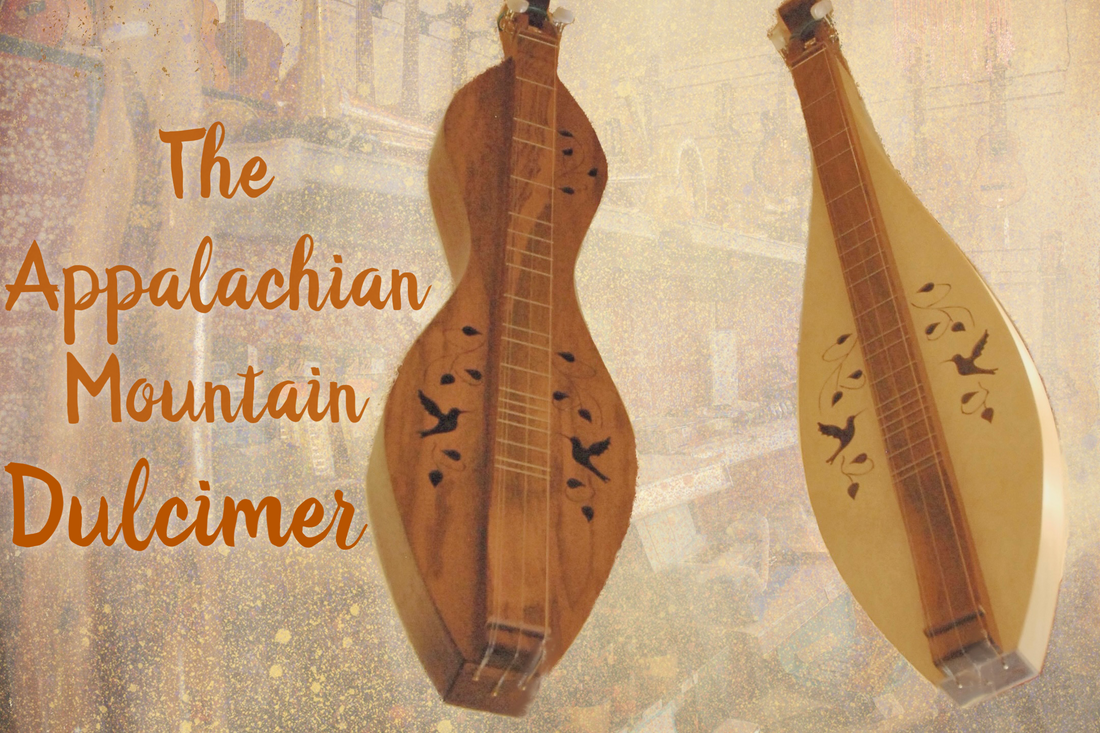The Appalachian Mountain Dulcimer is one of the most accessible stringed instruments to pick up and play. This zither with diatonic fretting is traditionally played on the lap, and sometimes on a wooden table to boost volume. While most people simply refer to this instrument as a dulcimer, other adjectives (i.e., plucked, fretted, teardrop, lap, box) are added on to distinguish it from its many cousins, and notably from the hammered dulcimer.
DULCIMER HISTORY
Much of the history of the dulcimer is speculative. It is associated today with the Scotch-Irish settlers who made their way into the southern Appalachian mountains. Before the United States of America was even a nation, this humble lap zither had already firmly rooted itself in the American tradition. That being said, the claim that this dulcimer is a distinctly American instrument may be a bit of a stretch. Similar instruments exist in areas such as Sweden (hummel), Norway (langeleik), Germany (scheitholt), and France (l'épinette des Vosges).
Interestingly, the Scottish and Northern Irish immigrants who supposedly invented the dulcimer were not from regions that traditionally had such a zither instrument. It is most likely that the Pennsylvania Dutch had brought the German scheitholt with them, and those early Appalachian settlers then encountered the instrument and didn't know what it was. Some suggest that the Appalachian settlers sought answers in one of the only reference books available to them – the Bible – and selected the dulcimer's name from an instrument the Angels were said to play.
PLAYING THE DULCIMER
In a seated playing position, the string nearest to the player is the melody string, with two or more additional strings as drone strings (or for chording). It is common to tune the instrument to DAA or CGG (bass, middle, and melody strings respectively), with the bass string a perfect fifth below the middle and melody strings. Because the instrument is fretted for a diatonic scale, the melody string is usually tuned so the tonic is at the third fret. This facilitates playing melodies in the Ionian mode (the major scale). The melody is played on the closest string (or string pair) only, with the unfretted drone strings providing a simple harmony, giving the instrument its distinctive drone-like ringing sound.
To play in a different key/mode, a traditional player would have to re-tune the instrument (or make use of a capo, depending on the shape of the instrument). For instance, to play a melody in D Minor, the instrument might be tuned to DAC. This facilitates playing the Aeolian mode (the minor scale), where the scale begins at the first fret (on a D note).
Modern instruments usually include at least one additional fret, usually the so-called "six and a half" fret (a half step below the octave). This enables one to play in the Ionian mode when tuned to DAD, the traditional tuning for the Mixolydian mode, where the scale starts on the open (unfretted) string. This arrangement is often found to be more conducive to chord-melody play. Fully chromatic dulcimers (with twelve frets per octave) are also made, to permit playing in any key without re-tuning.
You may be familiar with the sound of the dulcimer from recordings of singers such as Jean Ritchie, Joni Mitchell, and Cyndi Lauper). As Jean Ritchie stated, "I think it's the simplest instrument there is to play." So, if you're a singer looking for a good accompaniment instrument to get started with, it's a great place to start!
GETTING ACQUAINTED WITH THE DULCIMER
Some Books to Get You Started
- Dulcimer Chord Charts for DAD, DAC, & DAA tuning
- Mel Bay Dulcimer Song Book
- Old-Time Hymns & Gospel Favorites
Instructional DVDs


1 comment
I want to buy my son a dulcimer for Christmas. He is an adult. He is a senior developer for Microsoft. He would love to have a hammered dulcimer but they seem to be way out of my price range. Do you sometimes have used instruments in good condition? Do you offer a “layaway” kind of plan?